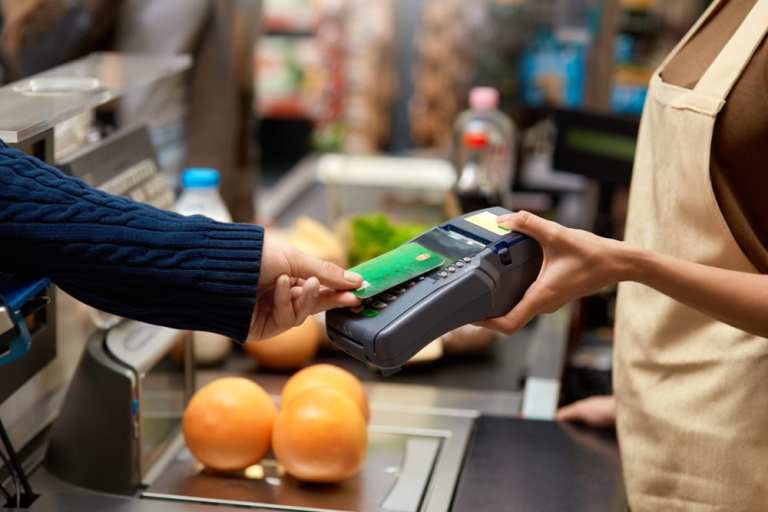Deep Dive: Why Contactless Card-Not-Present Transactions Are Gaining New Momentum

The COVID-19 pandemic has changed how consumers buy goods, and some of these new payment behaviors could continue well after the crisis ends. Consumers’ concerns about visiting stores and touching POS terminals have generated interest in touchless methods, as have merchants’ worries about risking potential virus exposure when handling cash. Customers are also looking for options like digital and card-not-present (CNP) transactions that allow them to make eCommerce purchases as smoothly and seamlessly as possible.
These safety and convenience considerations are pushing more consumers to use — and more merchants to enable — contactless and CNP payments. This month’s Deep Dive examines how the pandemic has spurred greater touchless payment method adoption and how card issuers, networks and other players in the space are responding.
Safety Concerns Encourage Contactless Card Use
Contracting or spreading COVID-19 is a top concern for many consumers, but contactless cards enable them to avoid potential contact with the virus by keeping them from touching POS terminals. Antennas embedded in the cards enable NFC between the terminals and the cards’ chips, allowing users to hover their cards near the POS devices’ readers instead of inserting them.
This technology has witnessed slow adoption in the U.S., but new realities stand to change that. Just 0.3 percent of U.S. consumers’ POS transactions were contactless in 2016, and only 3.5 percent of cards in circulation at that time were capable of making such payments. The COVID-19 pandemic could be prompting consumers and merchants to reconsider the technology, however. One credit card network reported that U.S. consumers’ use of its contactless cards and digital wallets rose 150 percent between March 2019 and March 2020.
A study conducted in late March illustrated a similar shift, finding that 30 percent of consumers reported using contactless methods like cards and smartphones for the first time after the pandemic hit. Safety concerns appear to have driven much of this development as 29 percent of those surveyed said they were “very” or “extremely worried” about contracting the virus when handling cash and 22 percent cited the same concern regarding payment cards.
The pandemic has driven global interest in contactless cards as well, with 46 percent of consumers around the world now saying their go-to cards offer contactless options. Governments are trying to push this share even higher by taking steps to make contactless cards more convenient to use. Many governments or financial institutions (FIs) limit the value of individual payments that can be made via contactless cards to prevent thieves from using stolen credentials because these payments do not require verification with PINs or signatures. These limits also create frictions for legitimate users by stopping them from making large payments, however.
Some officials are concluding that the risk of viral transmission is a greater concern than that of card theft when using contactless payments and they have been adjusting these caps. Authorities in 29 European countries raised their contactless value caps, and some private sector companies responded similarly. Payment processing company Square announced it would increase the value limits it places on the contactless card transactions it processes, for example, and several Australian banks recently offered consumers free contactless debit cards to encourage uptake.
Satisfying contactless payment experiences could persuade customers to stick with these methods even after the pandemic ends. Seventy percent of survey respondents who started using contactless options during the pandemic expect to keep using them once the public health crisis is over.
In-Person Retail, eCommerce Drive CNP Purchasing
Contactless cards are not the only payment type picking up steam during the pandemic. Many recently reopened retailers are insisting on processing digital, CNP transactions. One Boston-based hair salon implemented policies limiting customers to digital tips via Venmo and paying for on-site visits via card details stored on file, for example. Such policies can help retailers safeguard their employees and customers as well as win more business as 33.3 percent of consumers in a May 23 survey said that the ability to make contactless payments influenced their choices regarding where to shop.
CNP transactions are also becoming more popular as consumers shop online to avoid visiting public spaces. One credit card company measured a 40 percent year-over-year increase in CNP transactions during Q1 2020, for example, while another payment solutions firm reported a 24 percent year-over-year increase in the volume of eCommerce retail transactions it processed between January and June.
Merchants and card issuers are still looking to make online purchasing quicker and more convenient, and some of their strategies have gained attention amid the rise in online shopping. One major credit card company launched a new “buy button” capability this year, for example. eTailers can add the function to their online checkouts, enabling customers to click once to pay with stored card details rather than fill out information in several fields.
eTailers can also benefit from application programming interface (API) integrations with card issuers that enable merchants to rapidly receive updates when consumers change their card details. This ensures sellers that they always have current data on file, preventing transactions from failing due to outdated information.
Pandemic-related safety concerns have prompted more consumers to turn to touchless payment methods and eCommerce channels, and the convenience of doing so could lead them to rely on such offerings well after the public health crisis fades. Card issuers that can ease consumers’ card use online and provide contactless cards for in-person purchases could be well positioned to support both merchants and customers now and in the future.
